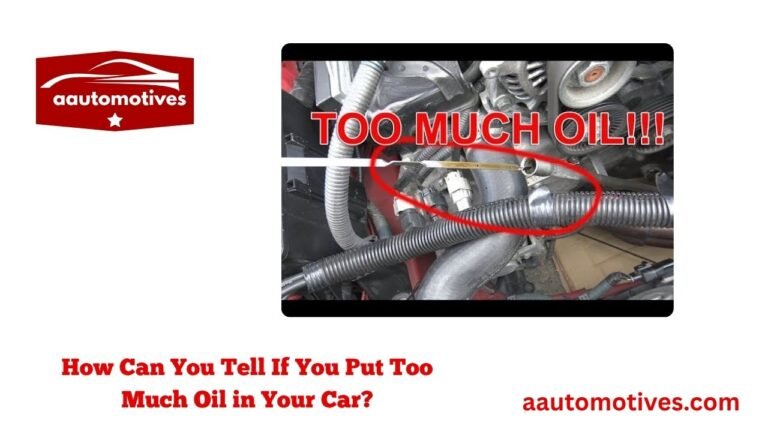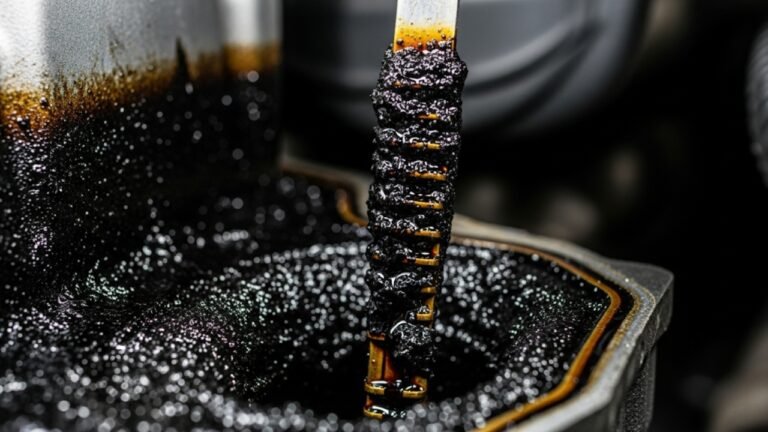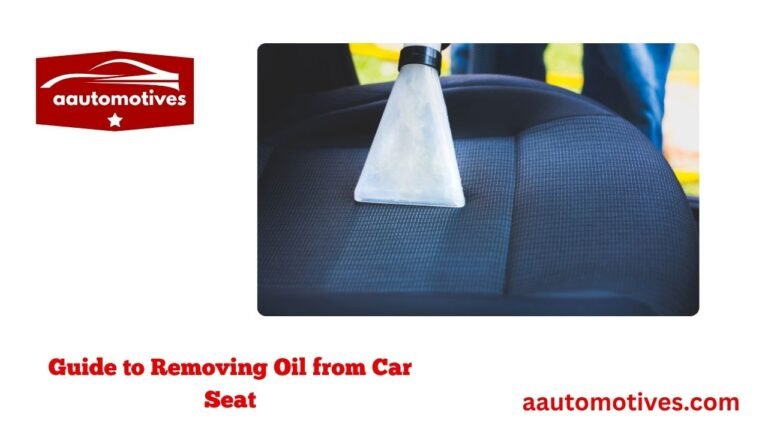When Does a Car Need an Oil Change?

Changing your car’s oil might sound like a boring chore, but it’s actually one of the most important things you can do for your engine. Imagine going for a run with no water. That’s your engine without fresh oil—dry, stressed, and overheating. When you don’t change your oil on time, you’re slowly wearing out your car from the inside out.
So, when does a car need an oil change? Is it really every 3,000 miles like Dad used to say? Or is that just an old myth? I’ll break it all down for you—clearly and in everyday words. No jargon. Just real talk, real tips, and stories from under the hood.
In This Article
- 1 Why Oil Is the Unsung Hero of Your Car’s Engine
- 2 Every Car Is Different — Forget the 3,000-Mile Rule
- 3 Watch for These Signs You’re Overdue for an Oil Change
- 4 Synthetic Oil vs. Conventional: Does It Really Matter?
- 5 How to Check Your Oil Like a Pro (Even If You’re a Newbie)
- 6 The Real Cost of Skipping Oil Changes
- 7 Why Seasons and Weather Can Change Your Oil Change Timing
- 8 Gas vs. Electric: What’s the Deal With EV Oil Changes?
- 9 Common Oil Change Myths That Need to Die
- 10 DIY vs. Professional Oil Change: What’s Better?
- 11 Your Personalized Oil Change Checklist
- 12 Final Thoughts: Respect the Oil, Respect Your Car
Why Oil Is the Unsung Hero of Your Car’s Engine

But engine oil doesn’t stay clean forever. Over time, it picks up dirt, tiny metal shavings, and even fuel residue. Eventually, it turns into this dark, thick sludge. When that happens, the oil can’t protect your engine anymore. That’s why timely oil changes matter.
I once ignored mine for 10,000 miles on a road trip. My engine started knocking. The mechanic said I was lucky I didn’t need a full rebuild. That taught me: Don’t wait too long. It’s not worth it.
Here’s what your oil does behind the scenes:
-
Lubricates all moving engine parts
-
Cools the engine by carrying away heat
-
Cleans out grime and deposits
-
Protects against rust and corrosion
-
Improves fuel economy and engine life
If you’re wondering when does a car need an oil change, start by understanding how much your car depends on fresh oil.
Every Car Is Different — Forget the 3,000-Mile Rule
Let’s bust a myth here: You don’t always need an oil change every 3,000 miles. That was true decades ago when oil technology was basic and engines were simpler. Today? Not so much.
Most modern cars can go 5,000 to 7,500 miles, some even up to 10,000 miles with synthetic oil. But—and this is key—it depends on your car and your driving style.
Are you always stuck in traffic? Do you drive on dusty roads? Tow trailers? These things stress the engine more and mean you’ll need oil changes more often.
A Few Factors That Change the Game:
| Factor | How It Affects Oil Life |
|---|---|
| Short trips (under 5 miles) | Oil doesn’t heat enough to burn off moisture |
| Hot or cold climates | Oil breaks down faster in extreme temperatures |
| Towing or hauling | Adds extra stress and heat to the engine |
| Stop-and-go traffic | More engine wear, even at low miles |
| Highway cruising | Easier on oil—longer intervals are okay |
So again, when does a car need an oil change? It depends. But checking your owner’s manual is a good start. Don’t rely on your buddy or the quick lube guy to tell you.
Watch for These Signs You’re Overdue for an Oil Change
Sometimes your car gives you a little nudge—like a cough before a cold. The longer you ignore the signs, the worse it gets.
Here’s what to watch for:
-
Dark, gritty oil on the dipstick
-
Knocking sounds or louder engine noise
-
Oil smell inside the car
-
Lower gas mileage than usual
-
Check engine or oil light flickers on
-
Engine feels sluggish or jerky
I once had a road trip planned. But my check engine light came on just as I started packing. Popped the hood, checked the dipstick—it looked like black coffee. That saved me from a breakdown in the middle of nowhere.
When your oil looks or smells bad, don’t wait. That’s your car telling you: “I need help!”
Synthetic Oil vs. Conventional: Does It Really Matter?
Here’s something a lot of drivers don’t realize: Not all engine oils are created equal. You’ve probably seen the terms synthetic and conventional. So what’s the deal?
Conventional oil is like old-school drip coffee. It gets the job done, but it breaks down faster and needs to be changed more often. Synthetic oil is like an iced caramel macchiato—engineered for performance and smoother results.
Synthetic oil is cleaner, more stable at high temps, and lasts longer—usually 7,500 to 10,000 miles. It costs more, yes, but in the long run, it can save you money with fewer changes and better engine health.
If you’re wondering when does a car need an oil change with synthetic oil, check your owner’s manual or maintenance schedule. You might be surprised how long you can go between changes.
How to Check Your Oil Like a Pro (Even If You’re a Newbie)
You don’t need to be a mechanic to check your oil. It’s easier than making toast, honestly. Just a rag, 2 minutes, and your eyes.
Here’s how I do it:
-
Park the car on a level surface.
-
Turn off the engine and wait 5 minutes.
-
Pop the hood and find the dipstick (usually has a yellow or orange handle).
-
Pull it out, wipe it clean, stick it back in, then pull it out again.
-
Look at the color and level.
If the oil is amber or light brown, you’re good. If it’s dark, gritty, or smells burnt, it’s time. And if the level is below the “MIN” line? Don’t wait—top it off or change it soon.
Doing this once a month can save your engine. It’s like checking your pulse—you don’t skip it, right?
The Real Cost of Skipping Oil Changes
You might think, “It’s just oil. I’ll wait another 1,000 miles.” But here’s the thing: Oil is cheap. Engines are not.
Skipping oil changes can cause:
-
Sludge build-up, which chokes your engine
-
Overheating, which damages gaskets and pistons
-
Loss of power and fuel efficiency
-
Complete engine failure, which can cost thousands
A friend of mine drove an old Corolla into the ground. He didn’t believe in regular oil changes. One day, his engine seized on the highway. Towing + repairs = $4,200. He could’ve spent $40 every 6 months instead.
So, if you’re asking when does a car need an oil change, remember: it’s way before your engine screams for help.
Why Seasons and Weather Can Change Your Oil Change Timing
Let’s talk about something many folks forget—the weather. Yep, the seasons actually affect your engine oil and how often you should change it.
In cold weather, oil gets thicker. It flows slower, which means it can’t lubricate as well. So, if you live somewhere with icy winters, your engine works harder at startup. That shortens oil life. On the flip side, hot climates thin the oil, making it break down faster. Either way, extreme temperatures stress your oil.
I remember living in Chicago where winter mornings could freeze your bones. My old Ford used to groan and start sluggishly. One winter, I skipped an oil change too long, and the car stalled on my way to work. That’s when I learned that seasons aren’t just about jackets—they’re about oil, too.
If you’re asking, when does a car need an oil change, always think about where you live. You might need to adjust your schedule by 500–1,000 miles in either direction depending on the climate.
Gas vs. Electric: What’s the Deal With EV Oil Changes?
Here’s a hot topic: electric vehicles. If you’re driving an EV, do you even need oil changes? The short answer—no, not in the traditional sense.
Electric vehicles don’t have internal combustion engines. That means no oil to lubricate pistons, no gunk, and no oil filters to change. So, if you’re driving a Tesla or a Nissan Leaf, you can relax. Your EV doesn’t care about motor oil. It runs clean and requires way less maintenance.
But hybrid cars? Whole different story.
Hybrids like the Toyota Prius still have gas engines. So, you absolutely still need oil changes—maybe even more often if the engine is turning on and off frequently. That on-and-off pattern can cause condensation and buildup that breaks oil down faster.
So, when does a car need an oil change in a hybrid? Stick to your owner’s manual, but check your oil every month just to be safe.
Common Oil Change Myths That Need to Die
You’ve probably heard these before—things that sound right but aren’t. Let’s clear up the confusion once and for all.
Myth 1: “Every 3,000 miles, no matter what.”
Nope. Not true anymore. That was a rule back when cars had carburetors and oil turned to sludge in 6 weeks. Modern engines + synthetic oil = longer life. Trust your manufacturer.
Myth 2: “If the oil is still golden, it’s fine.”
Not always. Color alone doesn’t tell you much. Oil can look clean and still lack viscosity or protective power. Always go by mileage, engine feel, and oil level.
Myth 3: “Once you go synthetic, you can’t go back.”
Total nonsense. You can switch back and forth. The key is to use the right viscosity and grade recommended for your car.
Myth 4: “You should warm up your car for 10 minutes before driving.”
Unless you’re in an arctic zone, this just wastes gas. Today’s cars warm up fast. Just drive gently for the first few miles, and your oil will get flowing naturally.
So next time someone tells you, “You need an oil change every 3,000 miles,” you’ll know what to say. Just smile and nod—but do your own homework.
DIY vs. Professional Oil Change: What’s Better?
This one’s personal. I’ve done both. There’s something satisfying about changing your own oil—getting your hands dirty, learning about your car. But there are pros and cons.
DIY Oil Change:
Pros:
-
Saves money
-
You control the quality of oil/filter
-
Feels empowering
Cons:
-
Messy if you’re not careful
-
You need the right tools
-
Disposal of used oil can be a hassle
If you’re handy and enjoy working on your car, DIY is rewarding. Just make sure to tighten the oil plug properly and dispose of oil responsibly.
Professional Oil Change:
Pros:
-
Fast and clean
-
Includes inspection and top-offs
-
Convenient for busy people
Cons:
-
Can be more expensive
-
Some shops upsell unnecessary services
-
You don’t always know the oil quality
I use a mechanic I trust. But I’ve also had places forget to tighten my filter, which made my engine leak oil all over my driveway. So choose your shop carefully.
Either way, the point is: Just change your oil. Don’t let it sit and rot.
Your Personalized Oil Change Checklist
Still not sure when your car needs an oil change? Here’s a quick checklist to keep it simple. Print it, save it, stick it in your glove box.
✅ Check your oil level once a month
✅ Change oil every 5,000–7,500 miles (or as manual says)
✅ Use synthetic oil if your car recommends it
✅ Change more often if driving short trips, towing, or in bad weather
✅ Don’t skip the oil filter—replace it every time
✅ Watch for dashboard warning lights or weird engine noise
✅ Write down the date/mileage of your last change
✅ Don’t rely only on mileage—look, smell, listen
✅ Keep a receipt log if you change it yourself
✅ Don’t forget seasonal changes affect oil life
With this checklist, you won’t have to guess when does a car need an oil change ever again.
Final Thoughts: Respect the Oil, Respect Your Car
Let me leave you with this: Your car is like a teammate. It takes you to work, picks up the kids, gets you to adventures and family dinners. And like any good teammate, it needs you to take care of it.
Changing your oil is like giving your car water when it’s thirsty. It’s cheap insurance. Simple care now can prevent major headaches later.
I’ve made the mistake of delaying oil changes. I’ve seen friends destroy engines just by ignoring a $40 fix. But I’ve also kept a car running beautifully past 200,000 miles just by respecting the oil change schedule.
So, the next time you wonder when does a car need an oil change, just think of it like this:
It needs one before you hear it cry. Not after.






